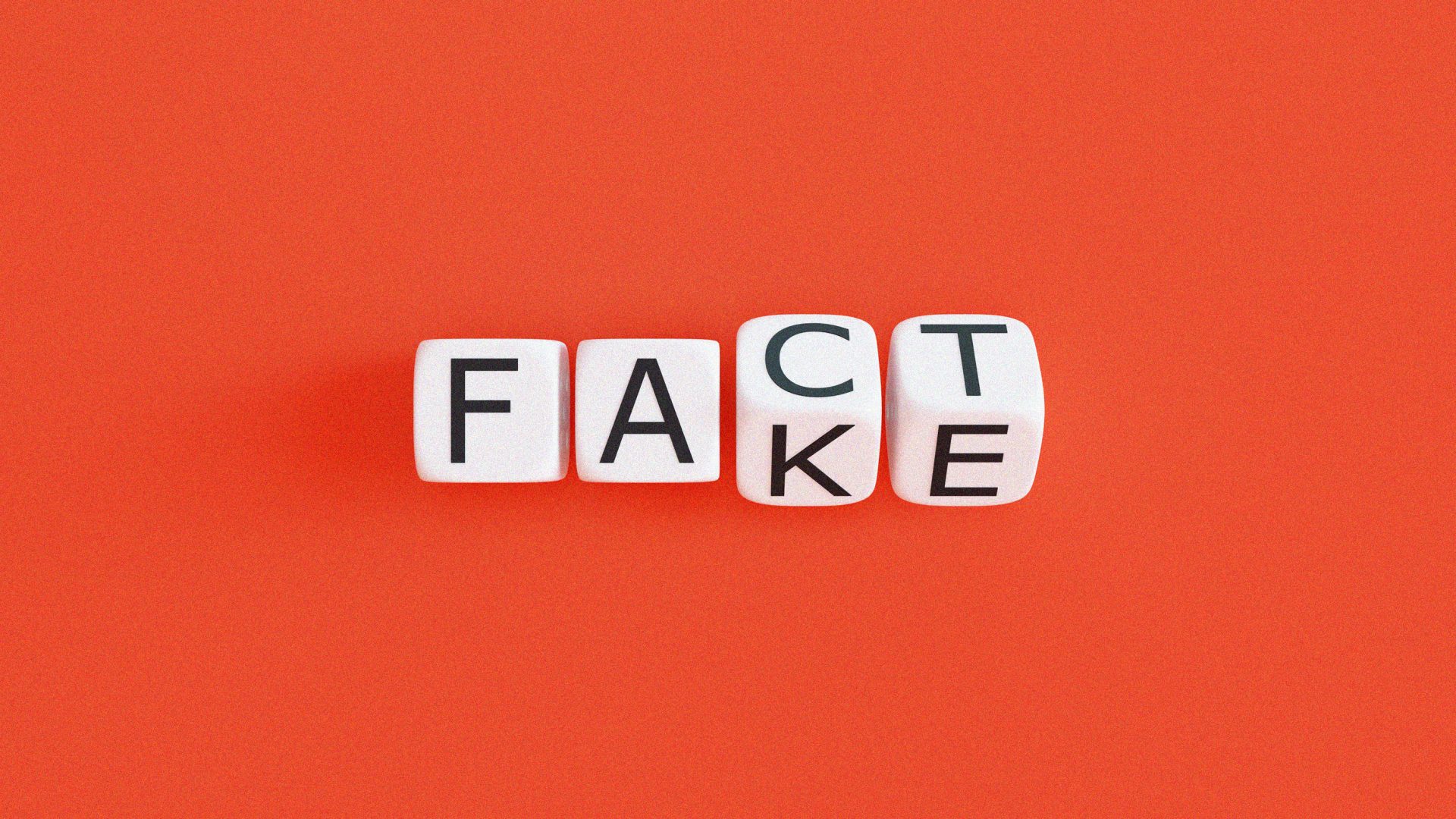Last week, a startling email popped up in inboxes across the United States. Purporting to be from the Department of Homeland Security, it was headed “Notice of Termination of Parole”, and began “It is time for you to leave the United States.”
It turned out some of the recipients were born US citizens. Others were green card holders. One was even a Canadian resident. A Reddit user warned it was probably a scam. Others feared a spoof.
A thread of worried, puzzled comments followed, as people tried to work out if the email was real, scouring it for clues. Someone consulted AI, which advised that it was probably fake. But it wasn’t.
Having spotted this torrent of confusion, Aaron Reichlin-Melnick, senior fellow at the American Immigration Council, tweeted that the explanation appeared to lie in a Politico report that the DHS was working with Elon Musk’s “Department of Government Efficiency”. Their initial task was to “implement parole terminations for 6,300 undocumented immigrants who either have criminal records or are on the FBI’s terrorist watchlist.” If this was indeed the origin of the curious email, Reichlin-Melnick suggested, DOGE was using the wrong dataset.
But what leapt out from this bizarre incident was the fact that the US government had issued a communication so odd that people struggled to believe it was real. This sounds a strange – and telling – historical echo.
Distrust in the word of the US government did not begin with Donald Trump; nor is it exclusive to Republicans. By 1967, as the administration of the Democratic president Lyndon Johnson became ever more bogged down in Vietnam, its constant insistence that the war was going swimmingly led journalists to complain of a “credibility gap”. Even the basis on which troops had been dispatched to Vietnam rested on an attack on a US warship which likely never happened.
READ MORE: When Fred Trump lost his mind
It was in this treacherous information environment that a group of young left wing satirists decided to send up the war and its supposed economic benefits. They concocted the story of a top-secret report, supposedly commissioned to scope out what would happen to the US economy and society if permanent peace broke out. The joke was that the report had warned that peace would be a disaster – and had had to be suppressed.
The satirists hired a writer called Leonard Lewin, who wrote a book-length hoax, Report from Iron Mountain on the Possibility and Desirability of Peace, replete with real sources in the footnotes. In November 1967, this was published – as non-fiction – by the reputable Dial Press.
When a journalist called the White House to ask if it was real, officials hedged, and the story hit the front page of the New York Times. Only after days of investigation, and worried memos reaching all the way up to President Johnson, did the White House declare that they had concluded it was fake.
But even then, officials were whispering to journalists that it might be real after all. Lewin and his fellow satirists kept quiet – and some, not least among the young male Americans who were at risk of being drafted into the military, continued to believe the report was authentic.
So those Sixties satirists managed to produce a hoax government document that convinced many people it was real. Today, meanwhile, the Trump administration has managed to produce a real government document that convinced many people it was a hoax.
And the echoes don’t stop there. Because Report from Iron Mountain had a rather surprising afterlife – which casts the Trump administration’s relationship with reality in a revealing light.
When he finally confessed to the hoax in 1972, Lewin said his goal was to draw attention to the absurdity of his country’s approach to war “in a provocative way”. As he wrote: “If the ‘argument’ of the Report had not been hyped up by its ambiguous authenticity – is it, just possibly for real? – its serious implications wouldn’t have been discussed. At all.”
By blurring the line between fact and fiction, his satirical fake would force his fellow Americans to confront the truth. Provided they recognised the difference between satire and reality.
The problem was, not everyone did.
It was not only young 1960s leftists who fell for Report from Iron Mountain. In the Nineties, it was republished by fascists, who were convinced it was real. A conspiratorial Hitler fan called Willis Carto ran a network of organisations, among them a weekly newspaper called the Spotlight, which printed, promoted and circulated the book, without asking Lewin. After all, wasn’t it a product of the government, and therefore not in copyright?
It was all too easy to dismiss Lewin’s claim to authorship as a deep state cover story, and insist his hoax was authentic. In 1982, the Spotlight had promoted the claim that The Diary of Anne Frank – which of course is wholly authentic – was a hoax.
In the 1980s and 1990s, Willis Carto also backed political candidates, but none won anything like the number of Americans who voted for Donald Trump last year, and it is too simplistic to make sweeping parallels with the fascist fringe of 35 years ago. However, the story of Report from Iron Mountain does suggest some rhymes, not least in their attitudes to hoaxes and reality.
Last month, the editor-in-chief of the Atlantic, Jeffrey Goldberg, revealed that he had been inadvertently admitted to a group chat on the messaging app Signal, in which leading figures in the administration had discussed a military operation against the Houthis. When secretary of defense Pete Hegseth – one of those involved – was challenged by a reporter about this, he shot back, attacking Goldberg’s reputation:
“You’re talking about a deceitful and highly discredited so-called journalist who’s made a profession of peddling hoaxes time and time again to include the – I don’t know – the hoaxes of Russia, Russia, Russia or the ‘fine people on both sides’ hoax or ‘suckers and losers’ hoax. So this is a guy that peddles in garbage.”
National security advisor Mike Waltz – the man who reportedly added Goldberg to the fateful Signal chat – echoed the talk of hoaxes, as did White House press secretary Karoline Leavitt. But were the stories Hegseth cited really faked?
“Russia, Russia, Russia” refers to the claim that Donald Trump is being blackmailed by Moscow. This is highly dubious, but so is the accusation that it is a deliberate hoax, rather than just an anti-Trumpist over-reading of the evidence.
Either way, it’s hard to see how Goldberg can credibly be accused of involvement, given that he wrote in 2016, “I am not suggesting that Donald Trump is employed by Putin” – merely that their worldviews had something in common.
Meanwhile, “fine people on both sides” refers to a 2017 Atlantic report that Trump had said that at confrontations in Charlottesville triggered by the “Unite the Right” rally, there were “fine people on both sides”, while denying he was talking about “neo-Nazis and white nationalists”. This came down to a disagreement about whether anyone not on the extreme right was attending the rally – but quoting Trump in this context was not a “hoax”.
And finally, “suckers and losers” refers to a 2020 article by Goldberg which cited anonymous sources to claim that Trump had used those insults to describe certain US soldiers killed in the first world war – which Trump’s former White House chief of staff John Kelly confirmed.
So none of Hegseth’s examples of hoaxes stand up. But then neither does his boss’s insistence that the 2020 election was rigged, nor his insistence, during last year’s election campaign, that climate change is “all a big hoax”.
Meanwhile, the belief that Report from Iron Mountain proved there were dark cabals at the heart of power, which went on to influence Oliver Stone’s blockbuster movie JFK, and the US militia movement, continues today. It even inspired a second hoax, which has been invoked as though it were real by Alex Jones and QAnon’s ‘Q’.
Wherever they appear, these patterns of thinking can be incredibly tenacious. But to push back, it’s not enough to check facts, wag fingers, or mock foolishness.
It is necessary to recognise the potency of blurring the boundary between hoax and reality, whether it’s done deliberately or not. Not least because, as we’ve seen, this blurring can work in both directions – casting a hoax as real is effective, but so is casting reality as a hoax. Both degrade the whole idea of shared trust in truth – the foundation on which democracy depends.
This works in quite a sophisticated way. A novel, for example, is presented, factually, as fiction. But a hoax is more fictional than fiction, because it’s a fiction presented, fictionally, as fact. To say that something real is a hoax is to present a fact fictionally as a fiction presented as a fact.
Given that this kind of thing is now fairly standard, it’s not surprising we’ve reached the point where people think a real government email is a spoof or a scam. And that’s before AI and its deep-fake possibilities really kick in.
The one consolation in all this is that those who use these techniques often end up rendering themselves unsure about what is real and what is not. Which tends not to be to their advantage.
Phil Tinline’s new book Ghosts of Iron Mountain: The Hoax That Duped America and Its Sinister Legacy is out now, published by Head of Zeus










